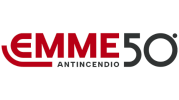Heat sources increase the temperature of fuel to start the combustion process. Heat sources may be direct, indirect or created by friction. Direct heat sources are flames, sparks and hot materials, which increase the temperature of the fuel by direct contact. The combustion can be also started indirectly: heat can be conducted (and in that case, conduction cannot even be stopped by isolating materials), irradiated, that is transmitted like light is, travelling through space until it is stopped by an opaque object, and transferred through thermal convection, that is through the interposition of some fluid. There is also the possibility of frictional heating starting fires.
Heat sources can be electrical, optical, chemical, biological, mechanical or thermal. Malfunctions of electrical devices may turn into electrical heat sources, just like atmospheric pressure discharges (i.e., lightnings). An example of optical heat source are rays of light and heat coming from some irradiating source (e.g., the Sun) that are dangerously concentrated by a lens, or a mirror. Chemical heat sources are often caused by chemical reactions between incompatible substances. A biological heat source is at the root of spontaneous combustion, caused by microorganisms releasing volatile substances. A mechanical heat source is created when, due to friction, mechanical energy is converted into thermal energy: in case there is dust, or flammable materials, a fire will start. Lubricating rubbing parts eliminates almost completely the danger of ignition, cleaning them carefully still decreases the risk of fire. Thermal heat sources are all direct heat sources.

